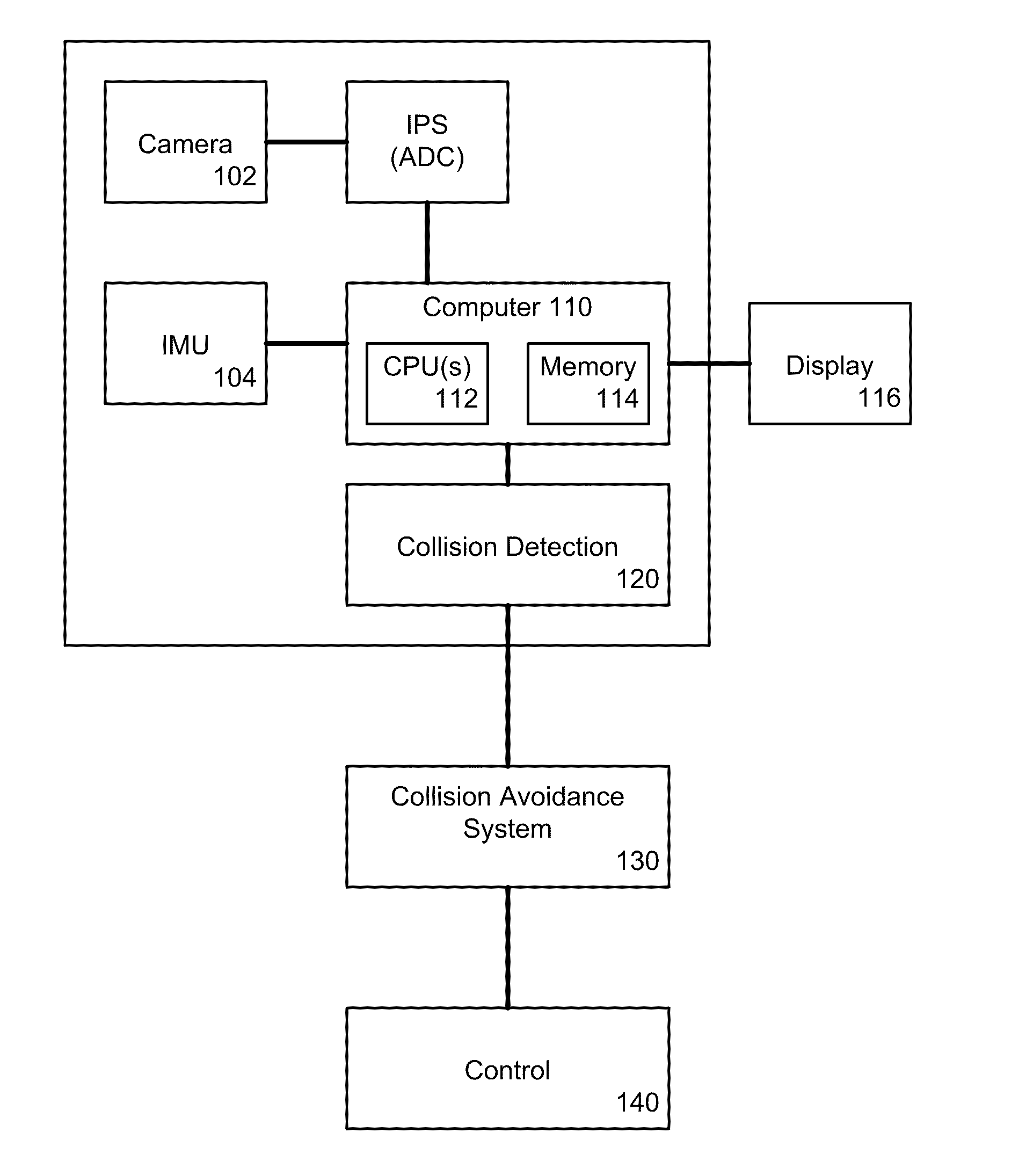Method and System for Visual Collision Detection and Estimation
a collision detection and estimation technology, applied in the field of visual collision detection and estimation, can solve the problems of uas flying “nap of the earth” risking collision with ground obstacles, flying at higher altitudes risking collision with other aircraft, and achieving the effect of optimizing the time to collision estimation
- Summary
- Abstract
- Description
- Claims
- Application Information
AI Technical Summary
Benefits of technology
Problems solved by technology
Method used
Image
Examples
Embodiment Construction
[0033]The present invention is directed to a method and system for collision detection and estimation. In accordance with one embodiment of the invention, system (in accordance with the method of the invention), using images and inertial aiding, formulates a detection of collision dangers, an estimate of time to collision for detected collision dangers, and provides an uncertainty analysis for this estimate.
[0034]In accordance with the invention, a moving vehicle, such as a UAS, MAV, a surface vehicle traveling on the ground or water uses images generated by an image source, such as a still or video camera to detect stationary objects in the path of motion of the vehicle and determine an estimate of the time to collision, should the vehicle remain on the present path. The collision detection and estimation system uses inertial information from an inertial information source, such as an inertial measurement unit (IMU) to determine constraints on corresponding pixels between a first a...
PUM
 Login to View More
Login to View More Abstract
Description
Claims
Application Information
 Login to View More
Login to View More - R&D
- Intellectual Property
- Life Sciences
- Materials
- Tech Scout
- Unparalleled Data Quality
- Higher Quality Content
- 60% Fewer Hallucinations
Browse by: Latest US Patents, China's latest patents, Technical Efficacy Thesaurus, Application Domain, Technology Topic, Popular Technical Reports.
© 2025 PatSnap. All rights reserved.Legal|Privacy policy|Modern Slavery Act Transparency Statement|Sitemap|About US| Contact US: help@patsnap.com



